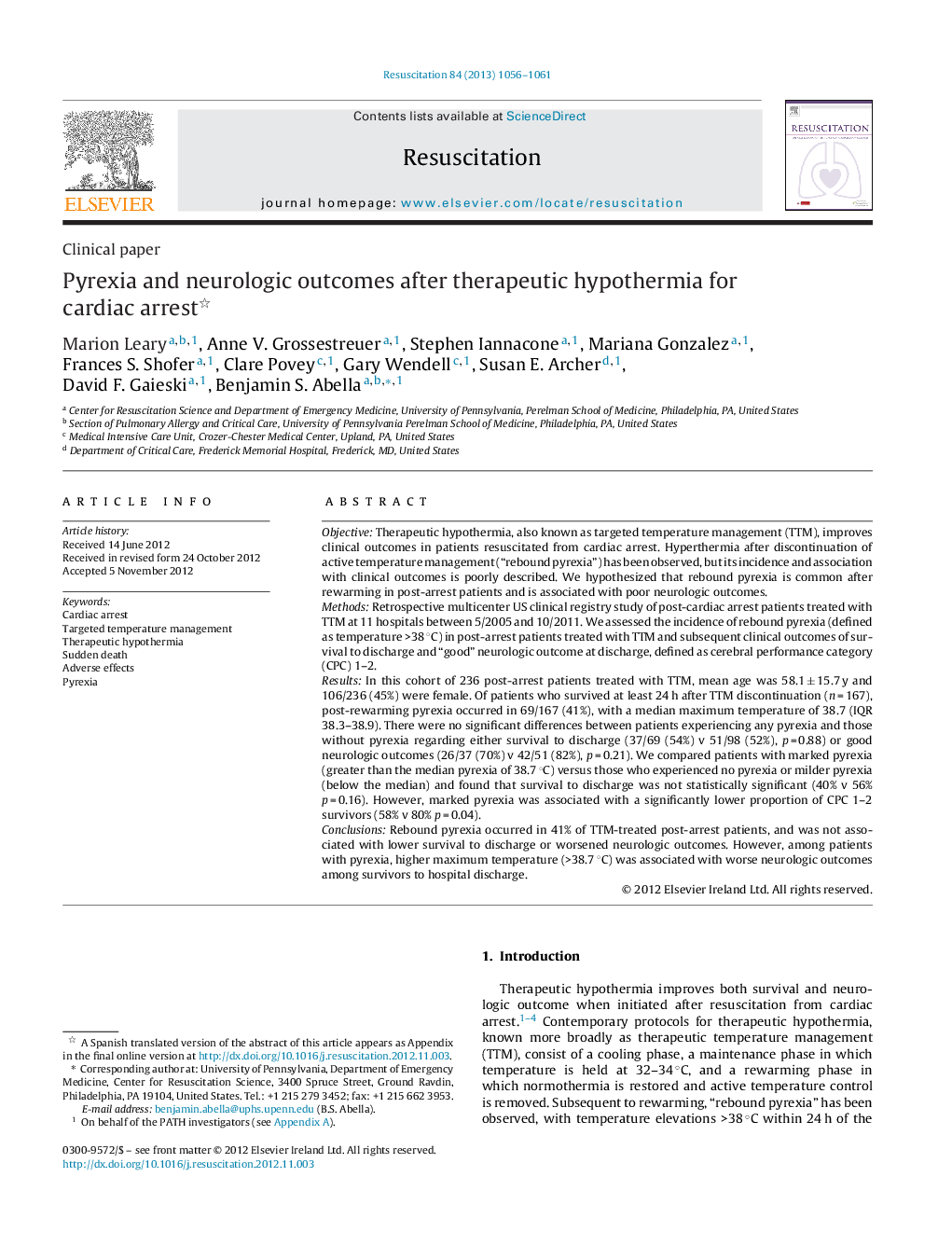| کد مقاله | کد نشریه | سال انتشار | مقاله انگلیسی | نسخه تمام متن |
|---|---|---|---|---|
| 3008246 | 1181451 | 2013 | 6 صفحه PDF | دانلود رایگان |

ObjectiveTherapeutic hypothermia, also known as targeted temperature management (TTM), improves clinical outcomes in patients resuscitated from cardiac arrest. Hyperthermia after discontinuation of active temperature management (“rebound pyrexia”) has been observed, but its incidence and association with clinical outcomes is poorly described. We hypothesized that rebound pyrexia is common after rewarming in post-arrest patients and is associated with poor neurologic outcomes.MethodsRetrospective multicenter US clinical registry study of post-cardiac arrest patients treated with TTM at 11 hospitals between 5/2005 and 10/2011. We assessed the incidence of rebound pyrexia (defined as temperature >38 °C) in post-arrest patients treated with TTM and subsequent clinical outcomes of survival to discharge and “good” neurologic outcome at discharge, defined as cerebral performance category (CPC) 1–2.ResultsIn this cohort of 236 post-arrest patients treated with TTM, mean age was 58.1 ± 15.7 y and 106/236 (45%) were female. Of patients who survived at least 24 h after TTM discontinuation (n = 167), post-rewarming pyrexia occurred in 69/167 (41%), with a median maximum temperature of 38.7 (IQR 38.3–38.9). There were no significant differences between patients experiencing any pyrexia and those without pyrexia regarding either survival to discharge (37/69 (54%) v 51/98 (52%), p = 0.88) or good neurologic outcomes (26/37 (70%) v 42/51 (82%), p = 0.21). We compared patients with marked pyrexia (greater than the median pyrexia of 38.7 °C) versus those who experienced no pyrexia or milder pyrexia (below the median) and found that survival to discharge was not statistically significant (40% v 56% p = 0.16). However, marked pyrexia was associated with a significantly lower proportion of CPC 1–2 survivors (58% v 80% p = 0.04).ConclusionsRebound pyrexia occurred in 41% of TTM-treated post-arrest patients, and was not associated with lower survival to discharge or worsened neurologic outcomes. However, among patients with pyrexia, higher maximum temperature (>38.7 °C) was associated with worse neurologic outcomes among survivors to hospital discharge.
Journal: Resuscitation - Volume 84, Issue 8, August 2013, Pages 1056–1061